8 Nights / 9 Days
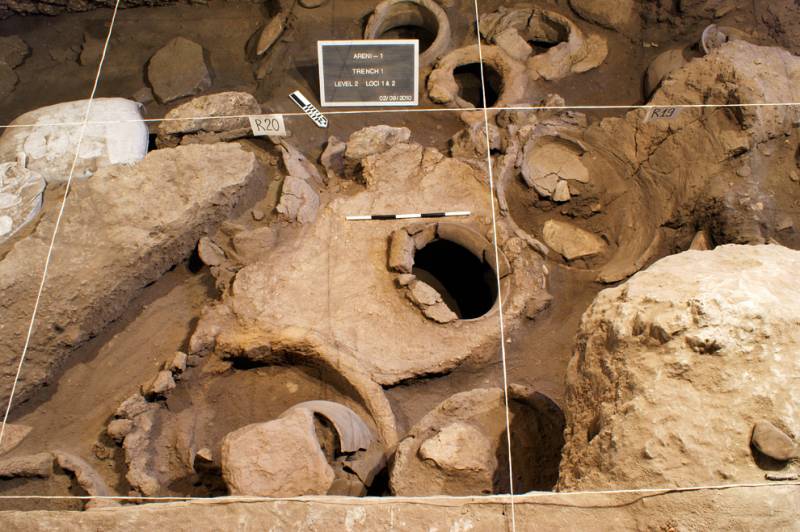
The tour is designed for those who discover Armenia for the first time. Country is more than just a geographical location. It is a sacred place, with some many traditions, strong cultural ties, and a long and rich history.
It is supposed to visit the main impressive tourist destinations of Armenia, and capital Yerevan.Air Ticket, Insurance,15-31-11
NORTHERN AVENUE is the most modern part of the capital of the Republic of Armenia which connects Yerevan’s two main squares: The Republic Square and the Freedom Square where the Opera Theater is located.
CAFESJIAN CENTER FOR THE ARTS is dedicated to bringing the best of contemporary art to Armenia and presenting the best of Armenian culture to the world. Inspired by the vision of its founder, Gerard L. Cafesjian, the Center offers a wide variety of exhibitions, including a selection of important work from the Gerard L. Cafesjian Collection of contemporary art. Having celebrated its grand opening in November 2009, CCA continues to exhibit unique works of modern and contemporary art and offers a diverse program of lectures, films, concerts, and numerous educational initiatives for adults and children. Over one million people have visited the Center annually since its opening.
OPERA AND BALLET THEATRE is one of the greatest attractions of the country. Being located in the heart of Yerevan it was designed by architect Alexander Tamanyan who combined the two auditoria in a single semi-circular building in a very unusual manner.
JERMUK is a resort town in Vayots Dzor region of Armenia located at an altitude of 2100 meters in a picturesque place, where there are alpine meadows, mountain forests, rocks and several waterfalls and, of course, a lot of mineral sources with different thermal temperatures from 20 to 65 degrees.
KHOR VIRAP is one of the most popular destinations in Armenia for a number of reasons, primarily because it is the place where Grigor Luisavorich (St. Gregory the Illuminator) was imprisoned for 13 years before curing King Trdat III from disease. This caused the conversion of the king and Armenia into the first officially Christian nation in the world in 301. To this day you can visit the underground chamber where he was imprisoned. It is located in the nondescript St. Gevorg Chapel apart from the main church.
The large St. Astvatsatsin church at Khor Virap was built in the 17th century and is typical in design, but with a lack of any decorative carving, or elements. It is located in a fort like complex with a nice courtyard.
ARENI is one of the ancient villages of historical Syunik. The Areni-1 Cave Complex has proven to be a treasure trove of Copper Age artifacts including the oldest shoe, brain, and winery in the world!
First investigated by archaeologists in 2007, the ever-giving Areni caves consist of a number of burial sites dating back to 5000-4000 BCE. The miraculous finds began almost as soon as digging has begun. Among the artifacts the Armenian-Irish excavation teams discovered a series of clay pots, each containing the skull of a pre-teen corpse. Remarkably, one of these skulls still hold a piece of well-preserved brain tissue, making it the oldest example of the Neolithic brain ever discovered. But the amazing finds didn’t stop there. In 2010, excavators discovered a sewn leather shoe dating back to the Copper Age. While sandals and other primitive footwear have been discovered from era’s farther back, the foot wrap is the oldest example in its kind in existence. Shortly after finding the ancient footwear, the researchers then discovered what seemed to be an ancient wine press. The wine-making site is, unsurprisingly, also the earliest proof of wine-making ever found. Since 2009, the traditional, annual Armenian "Wine Festival" is being held in the village. Monastery of NORAVANK is a hauntingly preserved religious complex sitting in a picturesque valley. However, it may not be standing today if it were not for the eyes on a representation of God.
It was built in the XIII-XIV centuries, on the ledge of a narrow meandering gorge of Arpa river tributary near the town of Yeghegnadzor. The gorge is famous for its sheer red rocks, towering behind the monastery, on the territory of which is located the two-storied church of St. Astvatsatsin with narrow cantilever stairs. The monastery is sometimes called Amagu Noravank, in order to distinguish it from the monastery of Bkheno Noravank near the town of Goris. Amagu is the name of a small village that once towered over the gorge. In the XIII-XIV centuries the monastery became the residence of the bishops of Syunik and, accordingly, the major spiritual and then cultural centre of Armenia, closely connected with many local and educational institutions and, first of all, with the famous university and the library of Gladzor.
KHNDZORESK is a great place for hiking and spelunking. There are a very large number of caves, although most of them are manmade and rather small. There are ruins of an old village, churches, tombs, great rock formations, springs and a new bridge that spans the gorge. There is a lot of stinging nettle, so pants might save you from some pain. Khndzoresk is a medieval and early modern village largely hewn into the soft rock. At the bottom of the gorge, turn downstream to reach S. Hripsime Church of 1663. On a spur beyond on the right side of the gorge is a 17th c. Anapat (hermitage), with the tomb of Mkhitar Sparapet, who was Davit Bek's chief aide and a successor in his war to drive out the infidel Muslims. Mkhitar was murdered in 1730 by the nervous Armenian villagers of Khndzoresk, who had vainly beseeched him to hole up in his own stronghold rather than their village. The Ottoman Pasha in Tabriz, to whom they presented his head, found this treachery distasteful, and decapitated the murderers. The site is green and memorable. There is a 17th c. cave church of S. Tadevos somewhere about, and a couple of 17th c. spring monuments. ZORATS KARER is also known as Carahunge, Karahunj, Qarahunj. It is located in an area of around 7 hectares and covers the site nearby Dar river canyon, close to the city of Sisian. The ancient site is often called the ''Armenian Stonehenge'', but the truth of what it is may be even more fascinating. According to researchers, Zorats Karer could be among the world's oldest astronomical observatories, and is at least 3500 years older than British Stonehenge.
TATEV MONASTERY is a 9th-century Armenian Apostolic monastery located on a large basalt plateau near the Tatev village in Syunik Province in southeastern Armenia. The term "Tatev" usually refers to the monastery. The monastic ensemble stands on the edge of a deep gorge of Vorotan River. Tatev is known as the bishopric seat of Syunik and plays a significant role in the history of the region as a center of economic, political, spiritual and a cultural activity. In the 14th and 15th centuries, the monastery hosted one of the most important Armenian medieval universities, the University of Tatev, which contributed to the advancement of science, religion and philosophy, reproduction of books and development of miniature painting. Scholars of the Tatev University contributed to the preservation of Armenian culture and creed during one of its most turbulent periods in its history. "Wings of Tatev" is an airway to the natural and historical treasures of Syunik which is in the southern region of Armenia. This is the longest non-stop double trackcable car in the world (5752 m), which is included in the Guinness World Records. You can reach Tatev Monastery with the cable car "WINGS OF TATEV" for 12 minutes of an unforgettable flight over the gorge of the stormy Vorotan River.
14:00-15:00 Lunch ORBELIAN'S CARAVANSERAI (known as Sulema Caravanserai and Selim Caravanserai), is a caravanserai in Vayots Dzor Province of Armenia. It was built along the Vardenyats Mountain Pass (previously known as the Selim Mountain Pass) in 1332, by prince Chesar Orbelian to accommodate weary travelers and their animals as they crossed from, or into, the mountainous Vayots Dzor region. Located at the southern side of Vardenyats Mountain Pass at a height of 2410 meters above sea level, Orbelian's Caravanserai is the best-preserved caravanserai in the entire country. Ruins of a small chapel may still be seen adjacent to the vestibule, across the road from a spring.
NORATUS CEMETERY, also spelled Noraduz, is a medieval cemetery with a large number of early khachkars located in the village of Noratus, Gegharkunik marz near Gavar and Lake Sevan, 90km north of Yerevan.
The cemetery has the largest cluster of khachkars in the Republic of Armenia. It is currently the largest surviving cemetery with khachkars following the destruction of the khachkars in Old Julfa, Nakhichevan by the government of Azerbaijan. The oldest khachkars in the cemetery date back to the late 10th century. During the revival of the khachkar tradition in the 16-17th centuries many khachkars were built under the yoke of the Safavid Empire when oriental influences seeped into Armenian art.
SEVANAVANK is a monastic complex located on a peninsula at the northwestern shore of Lake Sevan not far from the town of Sevan. According to an inscription in one of the churches, the monastery of Sevanavank was founded in 874 by Princess Mariam, the daughter of king Ashot I. At that time, Armenia was still struggling to free itself from Arab domination. Initially the monastery was built at the southern shore of a small island. After the artificial draining of Lake Sevan, which started in the era of Joseph Stalin, the water level fell about 20 meters, and the island transformed into a peninsula. The eastern shore is occupied by the Armenian president's summer residence. The monastery's still active seminary moved to newly constructed buildings at the northern shore of the peninsula.
Sevan, and its picturesque location, Sevanavank is one of the most visited tourist sights in Armenia.
HAGHARTSIN is a 13th-century monastery located near the town of Dilijan. It represents an indescribable example of blend of nature with architecture. The monastery was built between the 10-13th centuries. Now it consists of St. Gregory, St. Astvatsatsin (Holy Mother of God), St. Stepanos churches and some other buildings. The huge oak tree, which is almost at the age of the monastery, completes the whole scene. The monastery of Haghartsin may become part of a natural site based on the state protected area of Dilijan National Park, an important forest in the north-eastern Armenia.
18:00 Arrival in Haghpat
Hotel Accommodation in “Hotel Gayane”.
Alaverdi is a town in Lori Province at the northeastern part of Armenia, near the Georgian border. It is located at the only direct rail link between Armenia and Georgia. Situated at the bottom of the Debed river gorge, Alaverdi is an important commercial and industrial centre in northern Armenia.
HAGHPAT MONASTERY is a medieval religious complex founded in the 10th century. It has its significant place in the historical and cultural life of Armenia. Numerous valuable manuscripts and miniature paintings have been produced in the scriptorium of Haghpat for many centuries. In the 18th century the famous Armenian bard Sayat-Nova used to live and create in this monastery. The belfry with its unique architectural composition is of stunning interest. Situated not far from Haghpat, the monastery of SANAHIN is on the right bank of Debed River. This architectural complex consists of several churches, seminary, and book depository. The two monasteries are included in the UNESCO World Heritage List and they are magnificent examples of medieval Armenian architecture that has been attracting increasing numbers of tourists.
LORI FORTRESS -an 11th-century Armenian fortress located near Berd village in Lori Province, Armenia. The medieval fortress is located on a peninsula along the deep gorge cut by the Dzoraget and Tashir rivers. The fortress was built by David Anhoghin in 1065. The fortress had territory of 33 ha and was in the full blossom in the second half of the 11th century, becoming the capital of Tashir-Dzoraget kingdom. A church and 2 bathrooms were preserved at Lori-Berd castle. Near the castle, in the lower part of the gorge, an arched bridge stretches over the Urut River. There are lots of cross sculptures on the left side of bridge, on the cliff.
Return to Yerevan with a stop at ARMENIAN ALPHABET ALLEY.
Although there are various historical landmarks in Armenia, the oldest and most well-known is probably the Biblical Mount Ararat. This is why our tour promises a spectacular view from the closest spot possible.
Whilst travelling to Armenia, you may just be interested in seeing the world’s first Christian Cathedral church. ECHMIADZIN is considered to be the spiritual center of all Armenians all over the world! The word itself means a place where “the only begotten son of the God descended”.
You will visit the Church of St. HRIPSIME, which was built on the sepulcher of a Christian nun Hripsime who fled from the Roman Empire and was killed in Armenia. This amazing building has stood upright from the day of its construction since 618 A.D, making it one of the oldest standing churches in the world.
Five minutes’ drive away will be our next spot: the 7th century church of St. GAYANE.
Gayane was the name of an abbess who was martyred with other nuns by Tiridates III of Armenia in the year 301, and subsequently made a saint of the Armenian Apostolic Church.
The Church of Saint Gayane is a 7th-century Armenian Church in Vagharshapat (Etchmiadzin), the religious center of Armenia. It is located within walking distance from the Etchmiadzin Cathedral of 301. St. Gayane was built by Catholicos Ezra I in the year 630. Its design has remained unchanged despite partial renovations of the dome and some ceilings in 1652.
In 2000, Saint Gayane Church was listed in the UNESCO World Heritage Sites along with historical churches of Vagharshapat.
After this stop, you will be able to observe the world’s first Christian Cathedral-the Holy Echmiadzin, built in 301-304. According to the legend, Jesus Christ descended on the same spot where the Dissention Altar stands today, where Gregory the Illuminator ordered to build the church.
CATHEDRAL ZVARTNOTS was built at a time when most of Armenia had just recently been occupied by the invasions of Armenia by the early Muslim Arabs who were progressively occupying the Sasanian Persia/Iran of which Armenia was a part at that time. Construction of the cathedral began in 643 under the guidance of Catholicos Nerses III (nicknamed the Builder). Dedicated to St. Gregory, it was located in the place, where a meeting between King Trdat III and Gregory the Illuminator was supposed to have taken place. According to the medieval Armenian historian Movses Kaghankatvatsi, the cathedral was consecrated in 652.
Zvartnots remained standing until the end of the 10th century, but historical sources are silent as to the cause of its collapse. A close copy of the cathedral was erected out in Ani by Trdat the Architect under the reign of Gagik I Bagratuni during the final decade of the 10th century. The contemporary Armenian historian Stepanos Taronetsi mentoned Zvartnots when describing the church that Gagik I had inaugurated as a large structure at Vałaršapat (Vagharshapat), dedicated to the same saint that had fallen into ruins.
GARNI - A geological oddity topped with a temple.
The Goght River in Armenia carves through this beautiful, eye-catching gorge, referred to as Garni Gorge and located next to a village with the same name. The cliffs themselves are extremely beautiful, consisting mainly of well-preserved basalt columns. The orderly octagonal columns look almost man-made.
On a prominent part of the gorge, an old temple, known as the Garni Temple, can be seen. The temple dates back to the first century AD and has been fantastically preserved. It is believed to have been funded by Roman Emperor Nero and is perhaps the eastern-most Greek temple in the world. The temple was originally erected for the worship of the Greek gods although this changed after Armenia adopted Christianity in 301 AD. Along the gorge, one can also find an 11th century bridge built over what is today a small stream.
GEGHARD monastery carved out of cliffs and named after the spear that stabbed Jesus. At the turn of the 4th century, only one nation in the world had accepted Christianity as its official religion, and it was not a country anyone would expect. Led by Gregory the Illuminator who baptized the Armenian royal family in 301, the nation plunged into religion, collecting artifacts and building spectacular monasteries along the way.
The Geghard Monastery began only as a small cave chapel, which Gregory declared to held a sacred spring in the 4th century. Started with that, the complex grew, becoming more ornate and massive. In 1215, the main and most prominent chapel was built. Partially carved out rocks on all sides of it, the stone monastery melds beautifully with its surroundings and stands out among the outcroppings above.
Тhe buildings comprising the complex are a mix of elegant Armenian stonework and carved crosses juxtaposed with bare cave chapels. The mix gives the complex a feeling of antiquity, especially when combined with the relics the area once held.
Geghard is a derivative of an Armenian word meaning Monastery of the Spear. The complex was named after the spear used to wound Jesus during the Crucifixion. Allegedly, the spear was brought to Armenia after the Crucifixion and is now housed in Echmiadzin Treasury, in the spiritual center of Armenia.
Along with the religious importance of the site, the monastery offers stunning views of the Azat River Gorge surrounding the complex.
| No of pax | Age Limit | Price per pax (Rs) |
|---|---|---|
| Adult | Above 12 years | $ 1133 / Adult |
We are Dealing in Tour & Travels Services. Read More...
 8D/7N
8D/7N
Yerevan - Garni - Gegard - Zvartnots - Khor virap - Sevan - Dilijan - Hagarcin - Go..
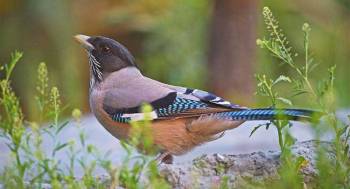 9D/8N
9D/8N
Birding Tour for Corbett and Uttarakhand
Corbett - Pangot - Kumaon - Sundargarh - UP East - Sahibabad
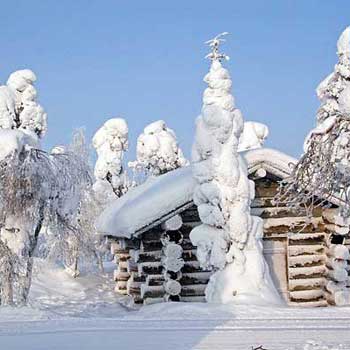 9D/8N
9D/8N
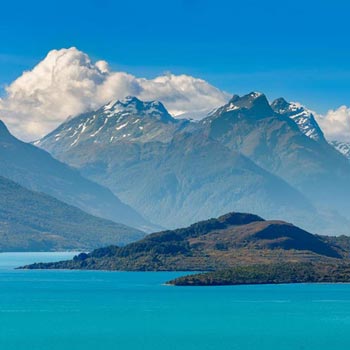 9D/8N
9D/8N
Honeymoon Tour To New Zealand - Colors O..
Auckland - Rotorua - Queenstown - Christchurch
 9D/8N
9D/8N
 9D/8N
9D/8N
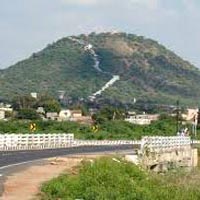 9D/8N
9D/8N
Ahmedabad - Bhuj - Kutch - Dwarka - Somnath - Rajkot - Sasangir
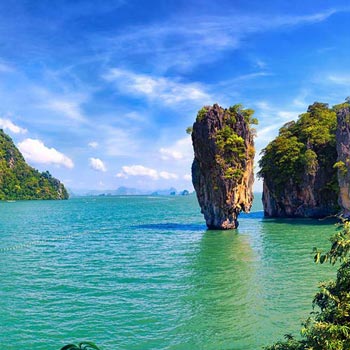 9D/8N
9D/8N
 9D/8N
9D/8N
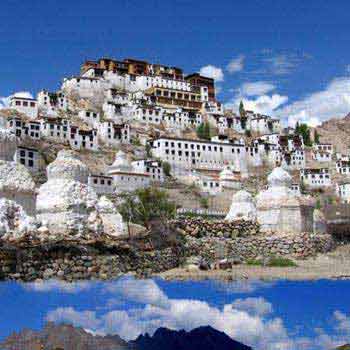 9D/8N
9D/8N
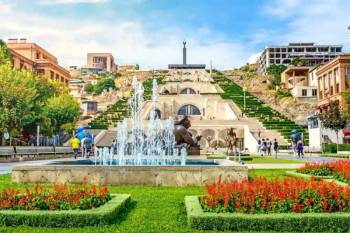 5D/4N
5D/4N
 6D/5N
6D/5N
 9D/8N
9D/8N
Yerevan - Jermuk - Alaverdi - Stepanavan - Garni - Areni - Noravank - Goris - Tatev..
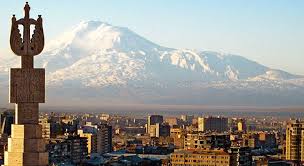 5D/4N
5D/4N
 8D/7N
8D/7N
 5D/4N
5D/4N
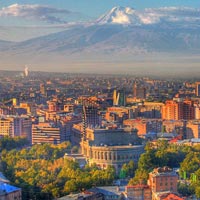 4D/3N
4D/3N
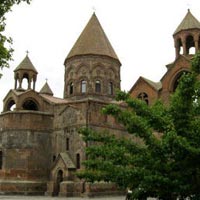 1D/0N
1D/0N
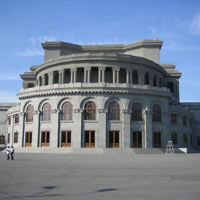 8D/7N
8D/7N